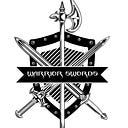Choosing the Perfect Metal for Sword Making
This post explores the world of sword making, diving into the historical and cultural significance of these powerful weapons. We’ll also examine the factors that influence sword construction and the best metals for creating these enduring symbols.
Swords: A Historical Perspective
Swords have been a part of human history for centuries, serving as tools for protection, hunting, and warfare. Forging a blade requires a deep understanding of materials, processes, and metallurgy to create a weapon that is both deadly and beautiful.
Sword-Making Process
Sword-making techniques vary depending on region and historical period. European longswords and Japanese katanas showcase distinct craftsmanship reflecting unique cultures and technological advancements.
Eastern Traditions: The Katana
In Japan, crafting katanas is an art form. The process starts with smelting iron sand and charcoal to create high-quality Tamahagane steel. Skilled artisans then shape and mold this steel into the katana’s curved blade. Differential hardening and quenching techniques are used to add strength and a beautiful wavy pattern to the blade’s edge. These methods not only enhance the blade but also imbue it with symbolic and aesthetic significance, deeply rooted in Japanese culture.
Western Traditions
European sword-making techniques evolved over centuries, influenced by civilizations like the Romans and advancements during the Middle Ages. Techniques like crucible steel (melting iron with charcoal) and pattern welding (forging different steel layers) were used to create high-quality blades and intricate Damascus steel patterns. European swords were designed for versatility, combining thrusting and cutting capabilities.
Factors Influencing Sword Construction
Several factors influence how a sword is constructed:
- Metal and Construction: Metal choice is crucial for a sword’s strength, flexibility, and durability. Historically, iron and then steel were used for these properties. High-carbon steel (0.6% to 1.7% carbon) is ideal for swords due to its ability to stay sharp and withstand impact. Heating and hammering the metal shapes the blade and strengthens it.
- Blade Appearance: The blade’s appearance plays a role in both function and aesthetics. Sword makers use techniques like differential hardening to create patterns (Hamon on Japanese swords, Damascus patterns on European swords). These patterns not only enhance the look but also indicate the blade’s hardness and toughness distribution, impacting its performance.
- Size and Weight: A sword’s size and weight affect how it handles in combat. A balanced sword allows for precise strikes and effective defense. Historical swords were crafted to suit different fighting styles by balancing blade length, hilt design, and overall weight.
Best Metals for Sword-Making
Two popular choices for sword making are:
- High Carbon Steel: Known for its high carbon content (for strength and hardness), high carbon steel swords are prized for their edge-cutting capacity, strength, and overall quality. While prone to rust if not maintained, these swords remain highly sought-after by collectors and sword enthusiasts.
- Damascus Steel: Renowned for its wavy patterns and robust construction, Damascus steel is crafted by folding and welding layers of different steels. This technique enhances the blade’s toughness and creates a visually stunning pattern. Damascus steel swords are prized for their aesthetics and excellent combat performance.
Enhancing Processes
- Heat Treatment: Heat treatment is critical for enhancing the mechanical properties of sword blades. It involves heating the metal and then rapidly cooling it (quenching) to achieve high hardness. Tempering follows to reduce brittleness and improve toughness. Heat treatment optimizes the blade’s hardness, edge retention, and overall performance.
- Quenching and Tempering: Hardening involves heating the metal to a specific temperature and rapidly cooling it to increase hardness. Tempering then reheats the metal to reduce internal stresses.
Choosing the Right Metal
When choosing a metal for sword making, consider factors like strength, durability, flexibility, and edge retention. High carbon steel remains a popular choice due to its excellent properties and historical significance. Damascus steel offers unique aesthetics and comparable performance, catering to different preferences and design requirements.
Modern Use and Collectability
While no longer primary weapons, swords retain cultural and ceremonial value. Enthusiasts and collectors cherish these swords for their historical significance and artistry. Swords are acquired for display or martial arts practice, emphasizing their role as more than just weapons but as enduring symbols of history.
Conclusion
Crafting swords blends ancient artistry with modern engineering. Choosing the right metal is crucial for both performance and aesthetics. Whether creating historical replicas or custom designs, understanding metal properties is key for balancing function and beauty. Metal Supermarkets offers a wide range of high carbon and Damascus steel, ideal for sword makers aiming to create exceptional blades that embody history and craftsmanship.
